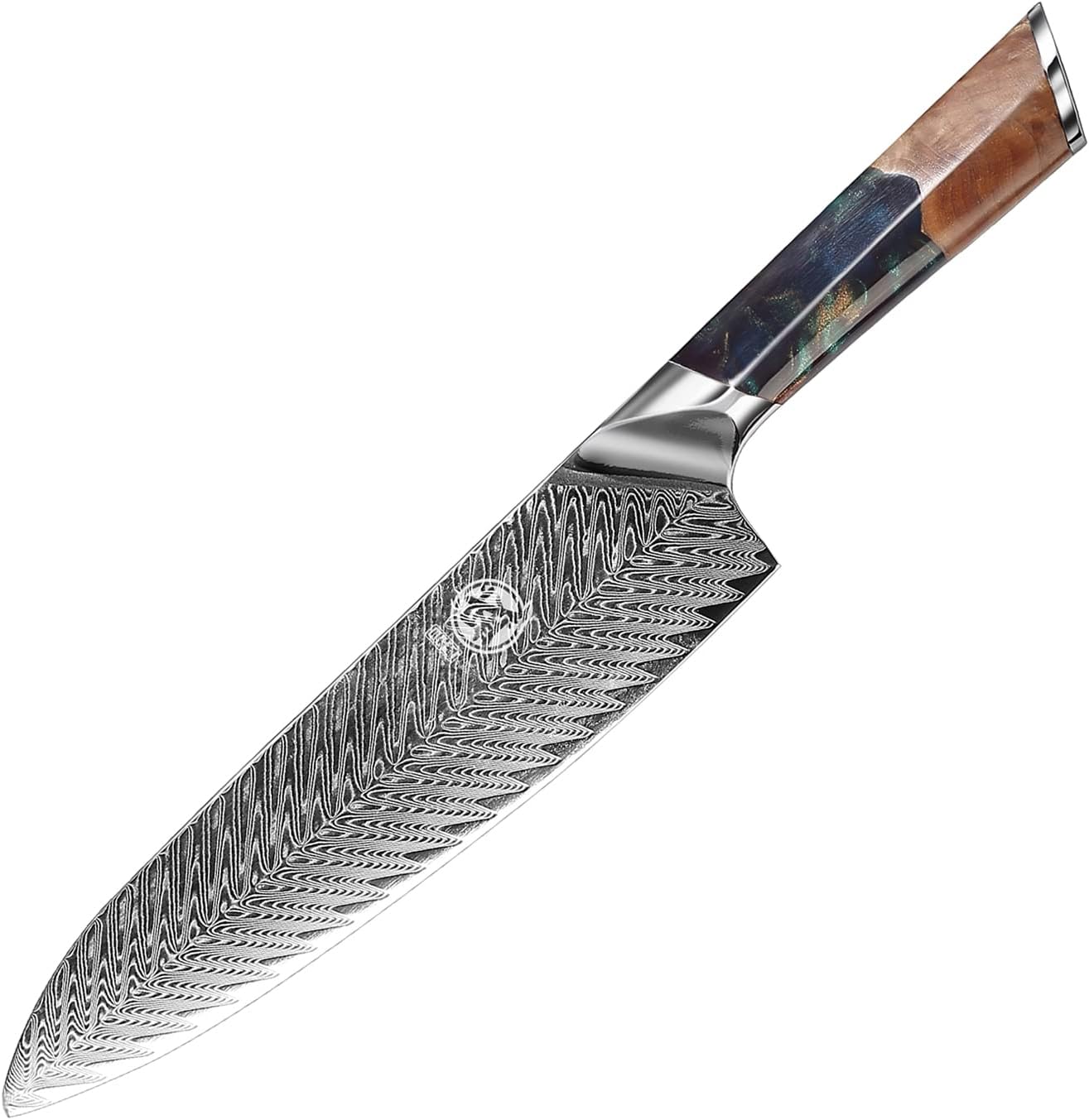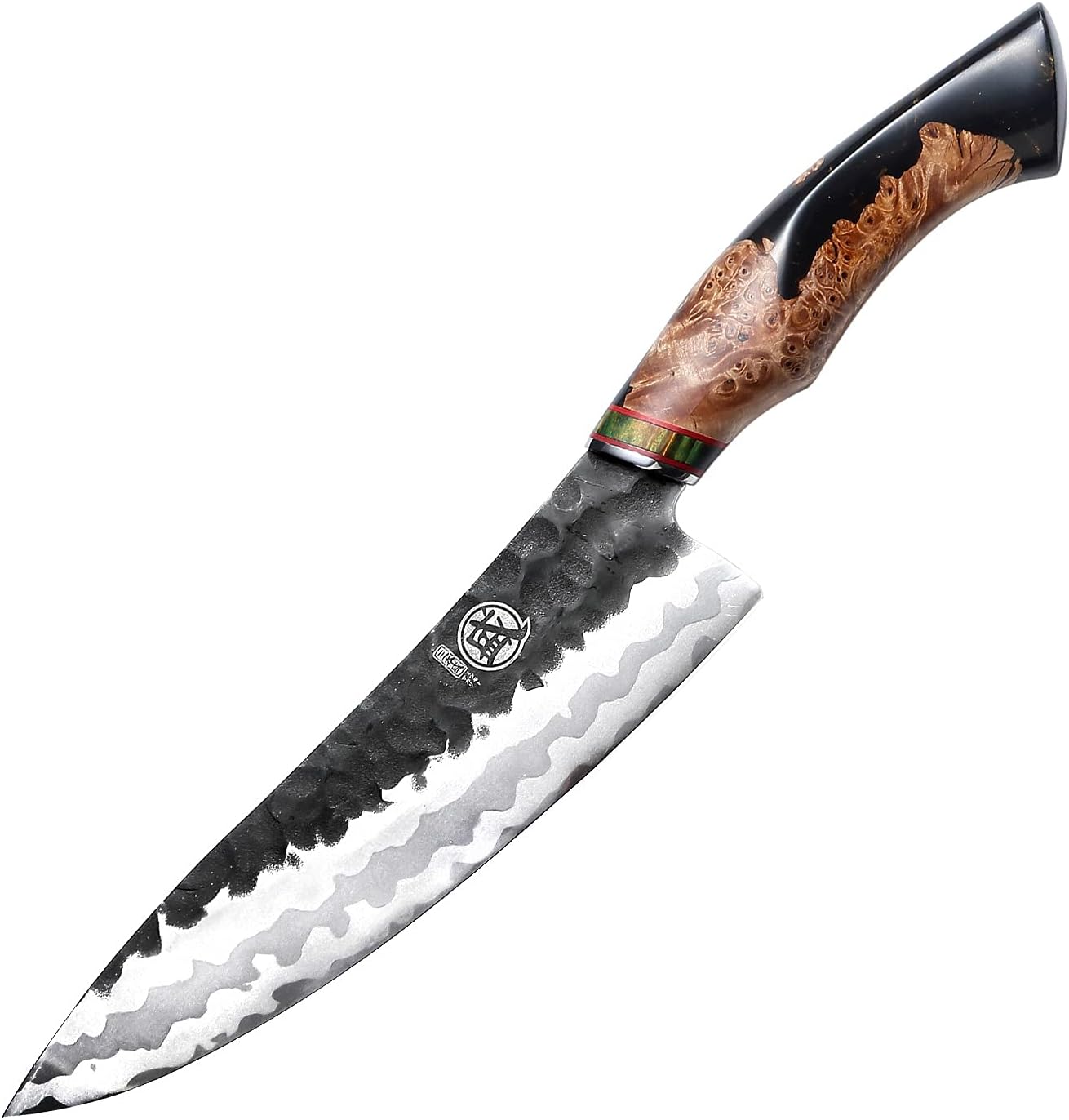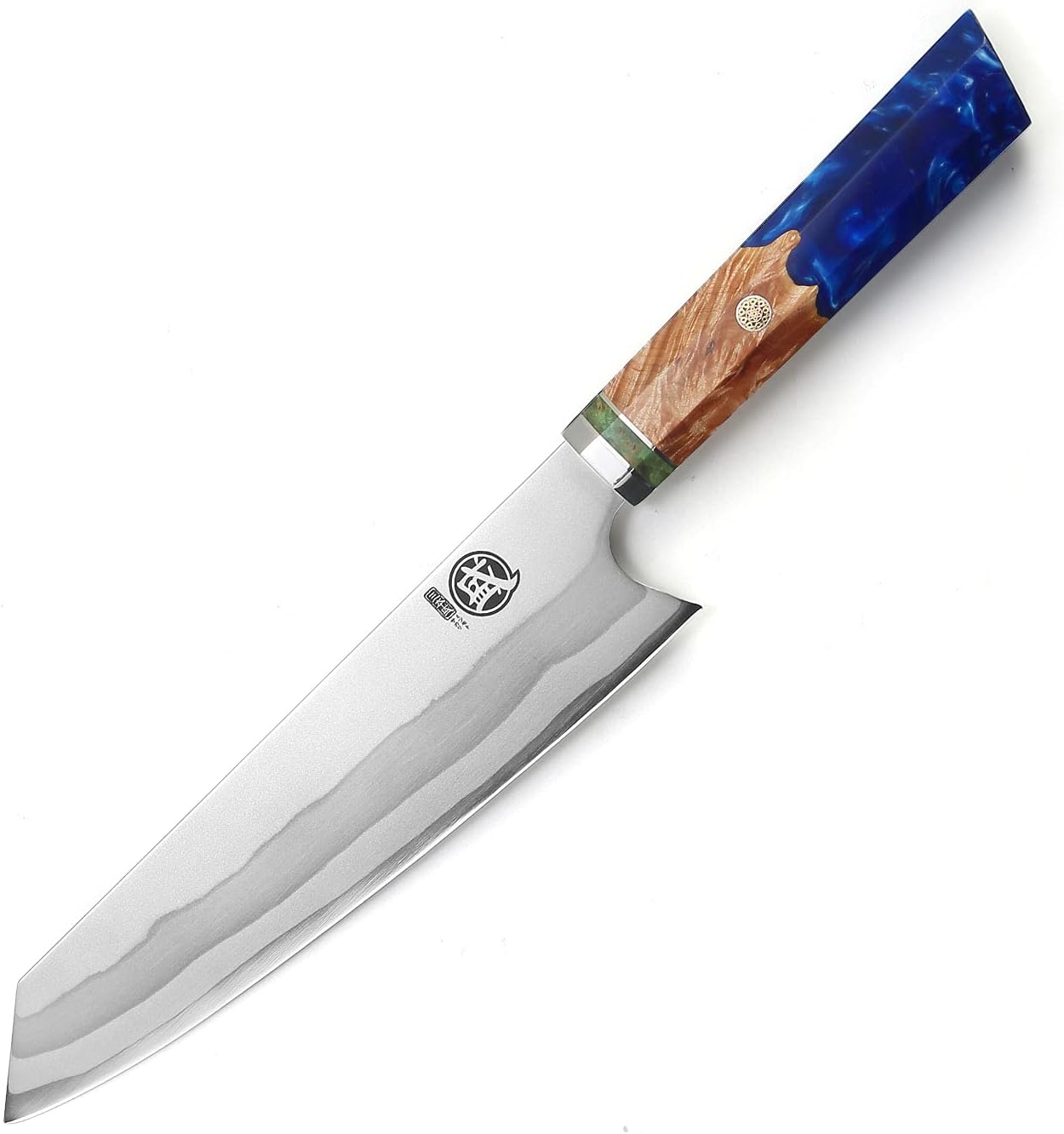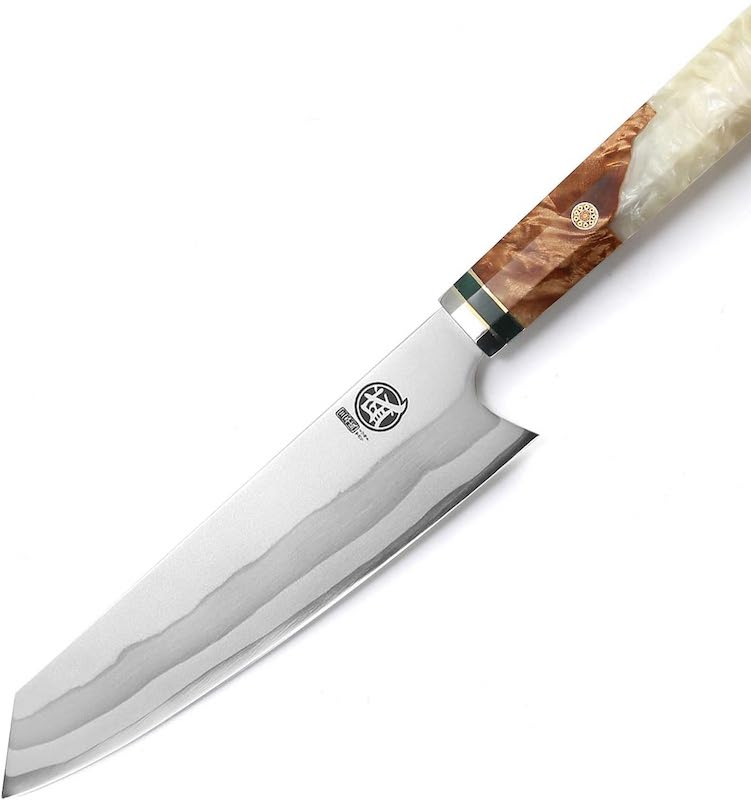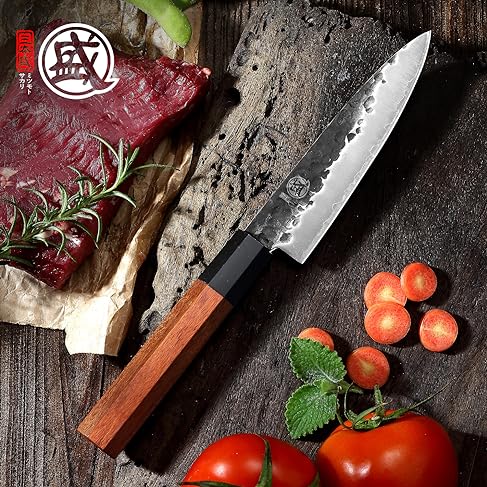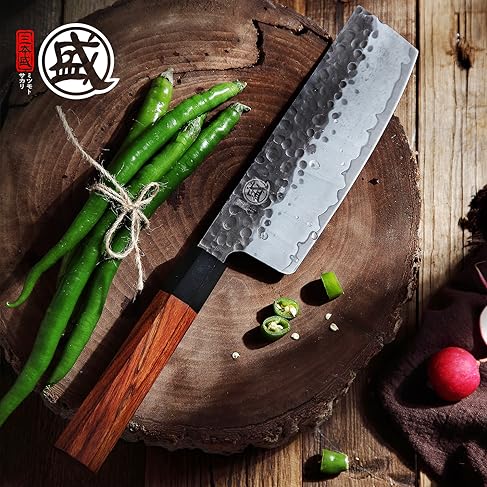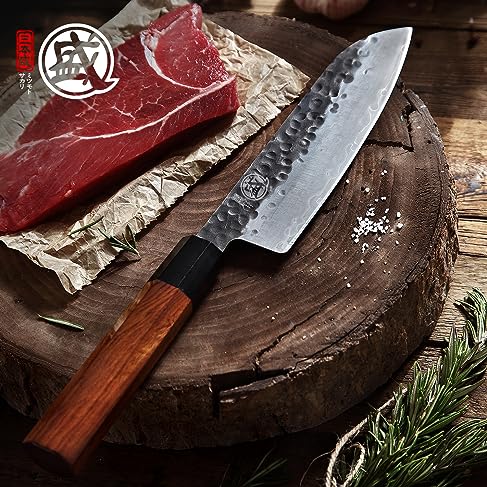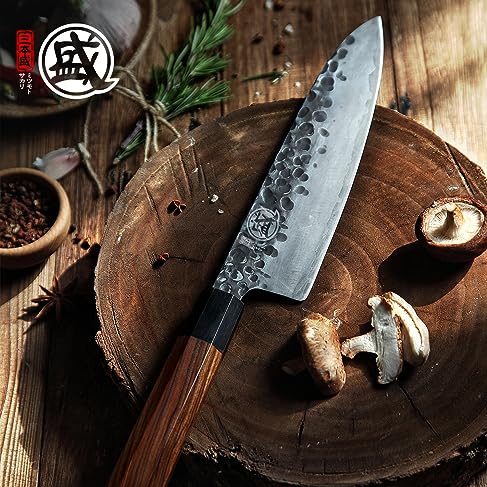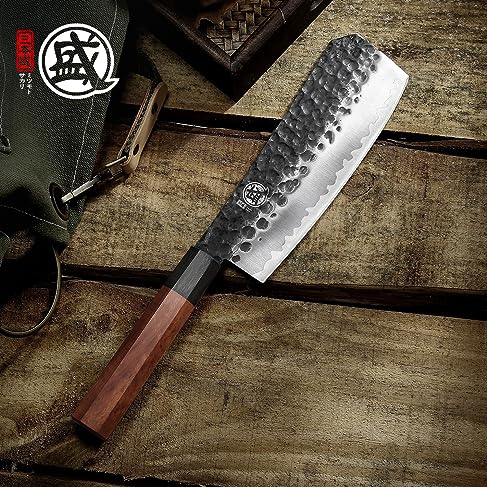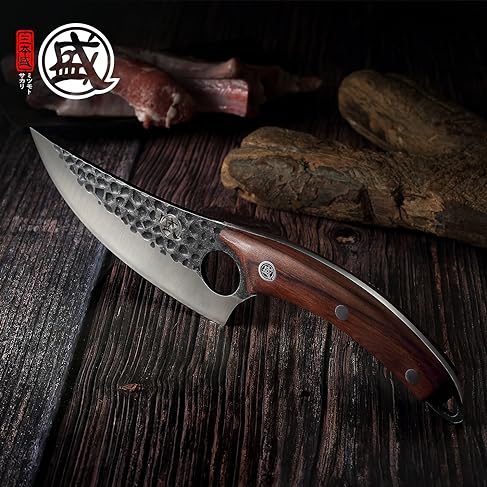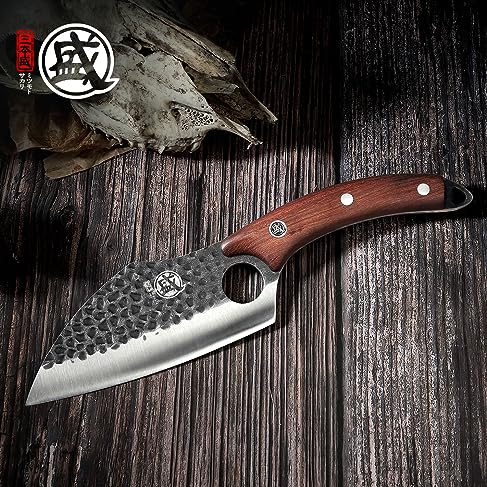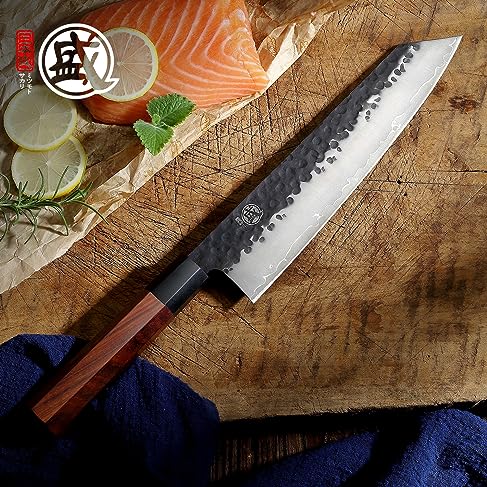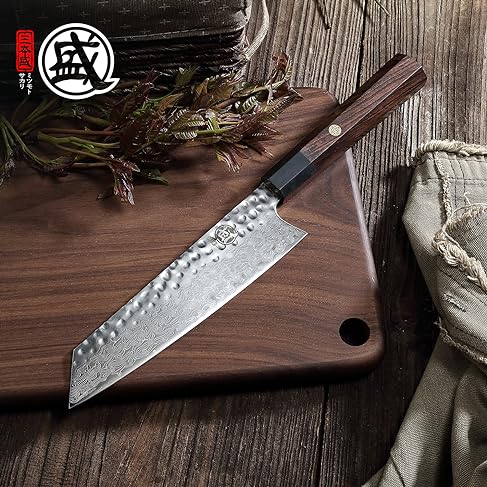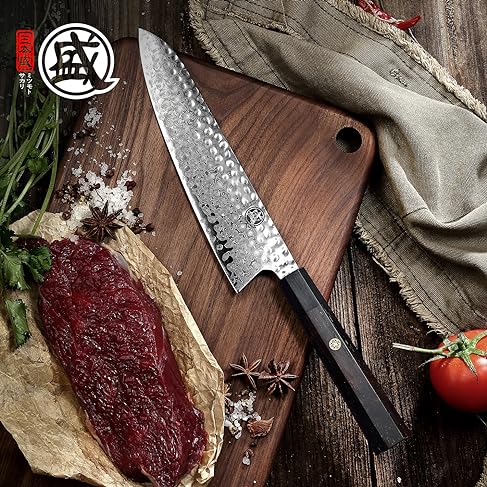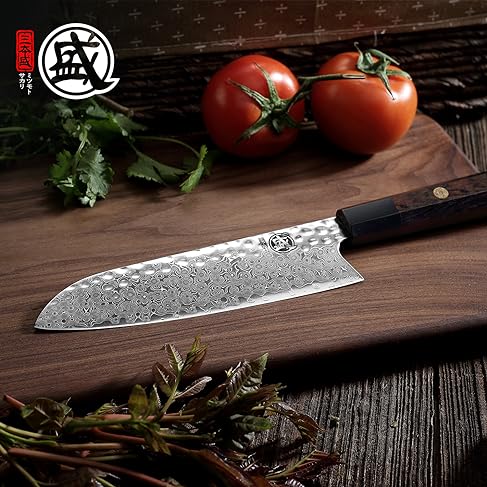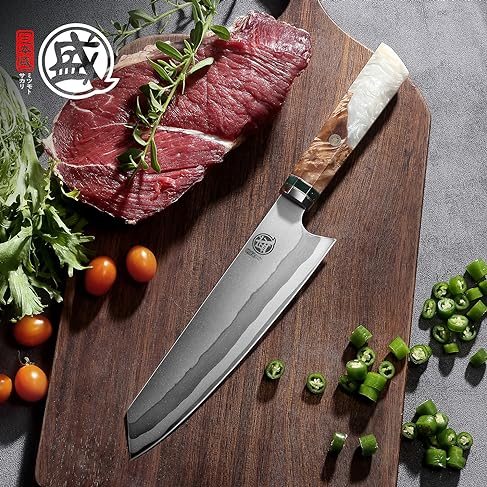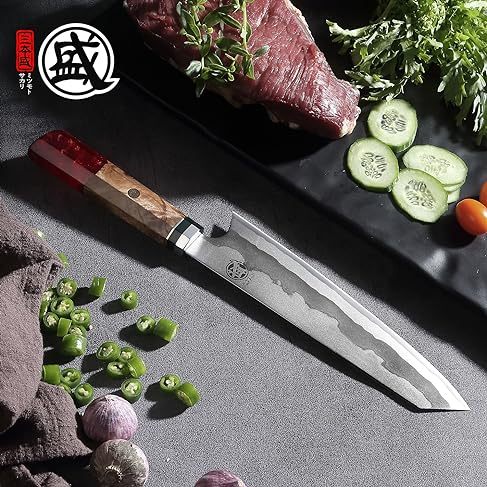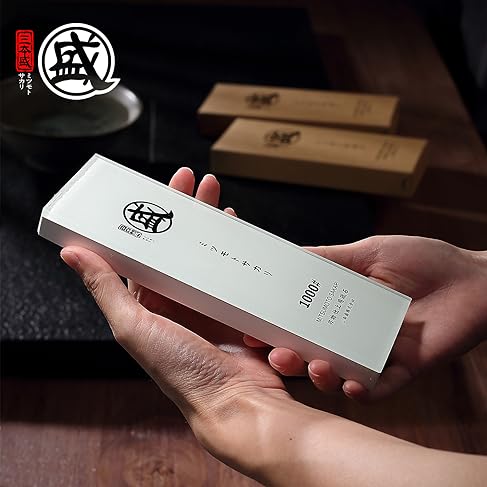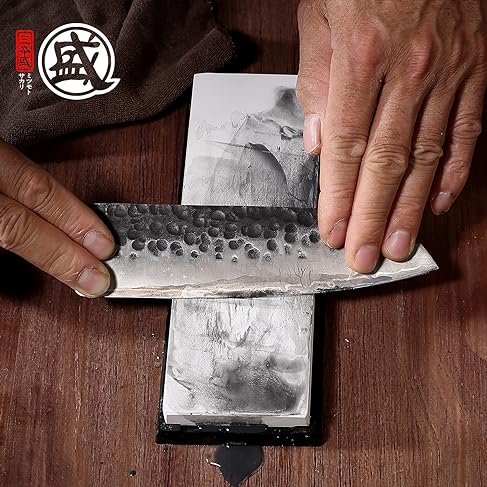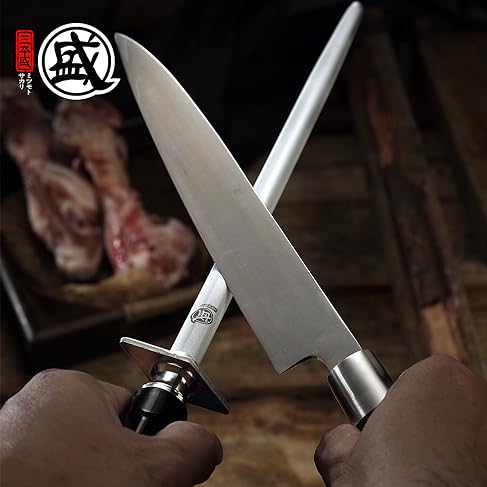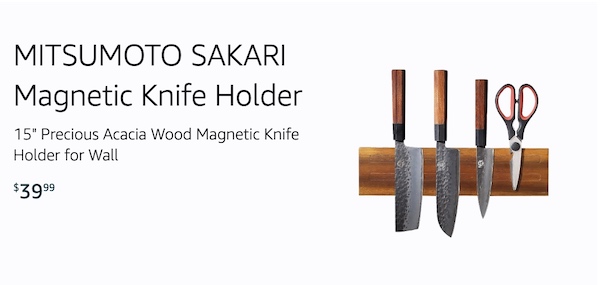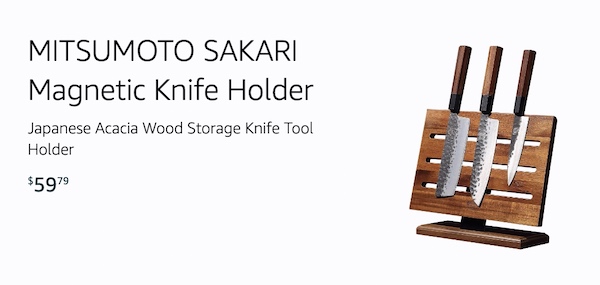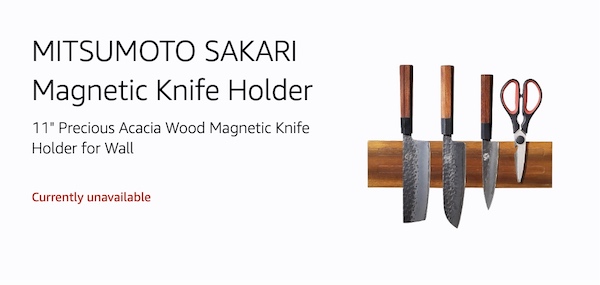Mitsumoto Sakari
Handcrafted by skilled artisans in Japan using traditional techniques, high-quality materials and feature a unique octagonal handle made from Japanese magnolia wood and water buffalo horn.
VG-10 steel
Handle made from Japanese magnolia wood
High-quality materials
WATCH VIDEO
TRADITIONAL HAND FORCING
Benefits
01
Exceptional sharpness
Mitsumoto Sakari knives are made with VG-10 steel, which is known for its ability to hold a sharp edge. This means that the knives can easily cut through food with minimal effort, making cooking more efficient and enjoyable.
02
High-quality materials
The knives are made with high-quality materials, including Japanese magnolia wood and water buffalo horn. These materials not only add to the knife's aesthetic appeal but also provide durability and resistance to wear and tear.
03
Handcrafted by skilled artisans
Each Mitsumoto Sakari knife is handcrafted by skilled artisans in Japan using traditional techniques. This means that each knife is unique and made with care and attention to detail.
04
Versatile
Mitsumoto Sakari offers a range of knives, including chef's knives, utility knives, and paring knives. This means that there is a knife for every task in the kitchen, from chopping vegetables to filleting fish.
What is the history of Mitsumoto Sakari knives?
Mitsumoto Sakari knives are a type of Japanese knife that are known for their high quality and precision. The history of these knives can be traced back to the early 1900s, when the Mitsumoto family began making knives in the city of Sakai, Japan.
Sakai has a long history of knife-making, dating back more than 600 years, and is known for producing some of the finest knives in Japan. The Mitsumoto family quickly gained a reputation for their skill and craftsmanship, and their knives became highly sought after by chefs and other professionals.
Today, Mitsumoto Sakari knives are still made using traditional techniques and the highest quality materials. They are known for their sharpness, durability, and beautiful design, and are considered to be some of the best knives in the world.
How are Mitsumoto Sakari knives made?
Mitsumoto Sakari knives are traditionally handcrafted in Seki City, Japan. The blades are made from high-quality steel, usually VG-10 or AUS-10, which is known for its durability and sharpness. The process of making these knives involves several steps, such as forging, shaping, and sharpening the blade.
First, the steel is heated and hammered into shape by a skilled blacksmith. This process helps to align the steel's molecular structure, making it stronger and more resilient. The blade is then shaped by a grinder, who removes any excess material and sharpens the edge.
After shaping, the blade is polished to a mirror-like finish. Finally, the blade is sharpened using a whetstone, which gives it an incredibly sharp edge. The handle is also made by skilled craftsmen, who use materials such as wood, bone, or horn to create a comfortable grip.
Overall, Mitsumoto Sakari knives are made using traditional Japanese techniques and high-quality materials to produce knives that are sharp, durable, and beautiful.
What types of knives does Mitsumoto Sakari offer?
Mitsumoto Sakari is a Japanese knife maker known for their high-quality handmade knives. They offer a variety of knives, including:
- Gyuto: A multi-purpose chef's knife that can be used for slicing, dicing, and chopping.
- Santoku: A shorter, lighter chef's knife that is ideal for slicing, dicing, and mincing.
- Petty: A small knife used for precision tasks such as peeling, trimming, and carving.
- Nakiri: A Japanese-style vegetable knife with a straight blade that is ideal for chopping and slicing vegetables.
- Sujihiki: A long, thin knife used for slicing meats and fish.
- Yanagiba: A long, single-beveled knife used for slicing raw fish and seafood.
Each type of knife has its own unique features and is designed for specific tasks. Mitsumoto Sakari knives are known for their exceptional sharpness and durability, making them a popular choice among professional chefs and home cooks alike.
How do I care for my Mitsumoto Sakari knife?
Mitsumoto Sakari knives are high-quality Japanese knives that require proper care to maintain their sharpness and longevity. Here are some tips on how to care for your Mitsumoto Sakari knife:
- Hand wash the knife: Avoid putting your Mitsumoto Sakari knife in the dishwasher. Instead, hand wash it with warm water and mild dish soap. Rinse it thoroughly and dry it with a soft cloth.
- Store the knife properly: After cleaning, store your Mitsumoto Sakari knife in a knife block, sheath, or on a magnetic strip. This will protect the blade from damage and prevent it from dulling.
- Sharpen the knife regularly: Use a sharpening stone or honing rod to sharpen your Mitsumoto Sakari knife regularly. This will help maintain its sharpness and prolong its lifespan.
- Avoid cutting hard or frozen foods: Mitsumoto Sakari knives are designed for precision cutting and are not meant for heavy-duty tasks. Avoid using them to cut through hard or frozen foods as this can damage the blade.
By following these care tips, you can ensure that your Mitsumoto Sakari knife stays sharp and in excellent condition for years to come.
Where can I purchase Mitsumoto Sakari knives?
Mitsumoto Sakari knives are highly sought after for their sharpness and durability. You can purchase Mitsumoto Sakari knives from various online retailers such as Amazon, eBay. Additionally, you can also find them at specialized kitchenware stores or Japanese knife stores. It is recommended to purchase from a reputable seller to ensure the authenticity of the product.
Contacts
Address: 10 ANSON ROAD, #27-18, INTERNATIONAL PLAZA, SINGAPORE 079903
Email: office@mitsumotosakari.org
